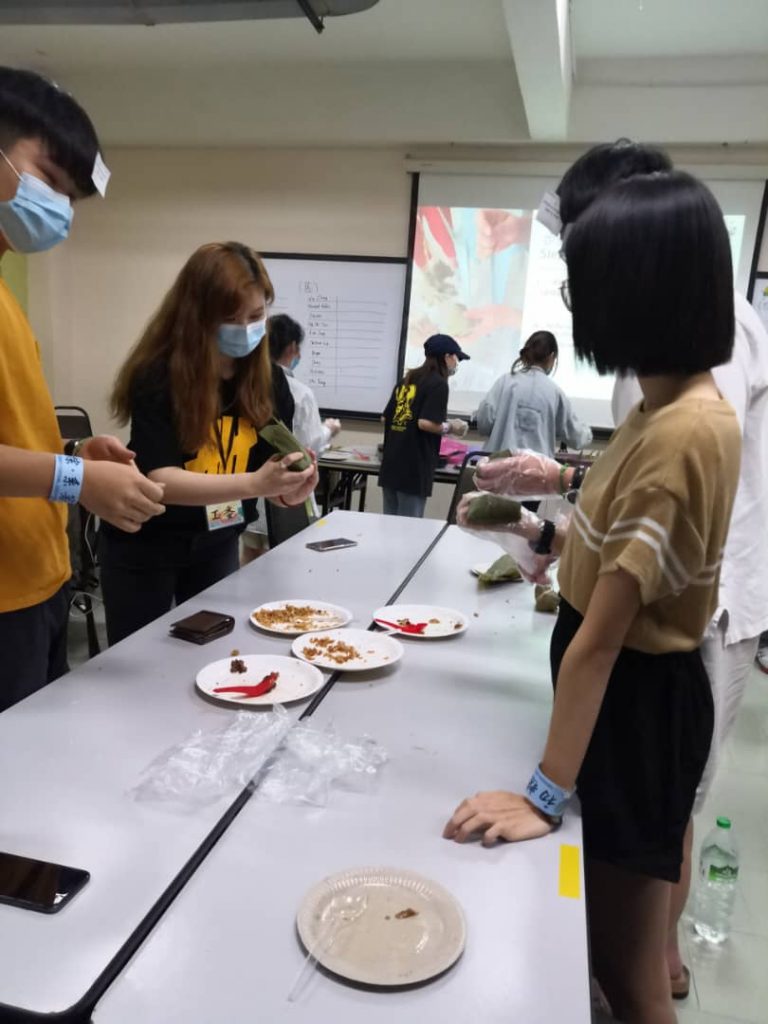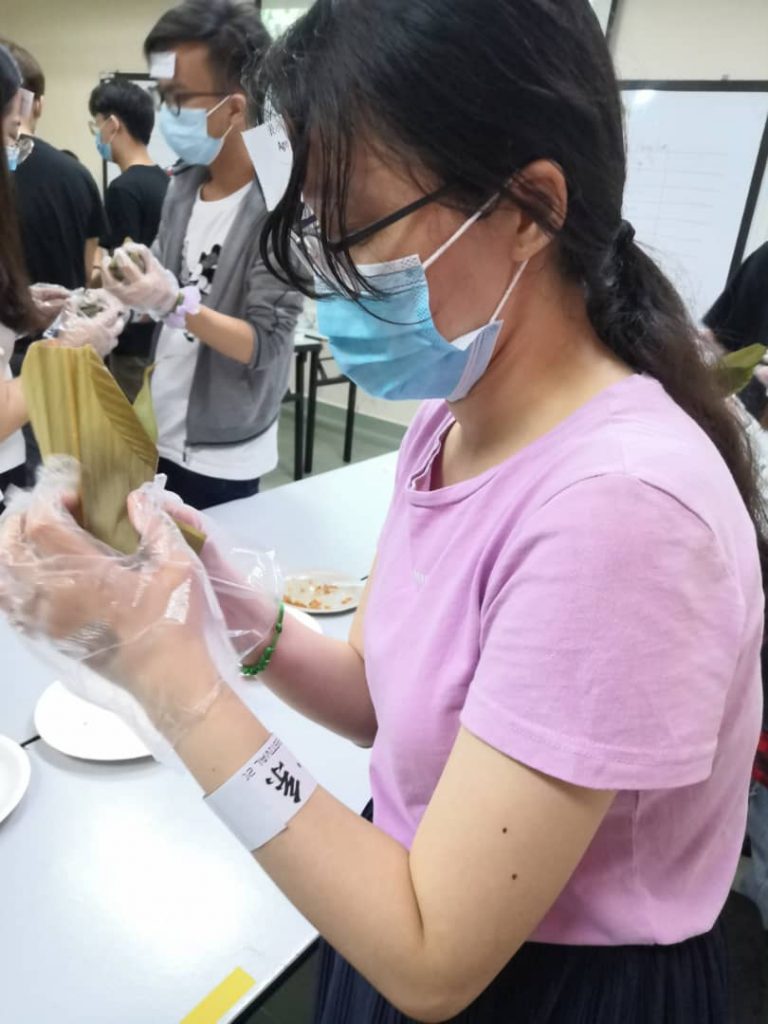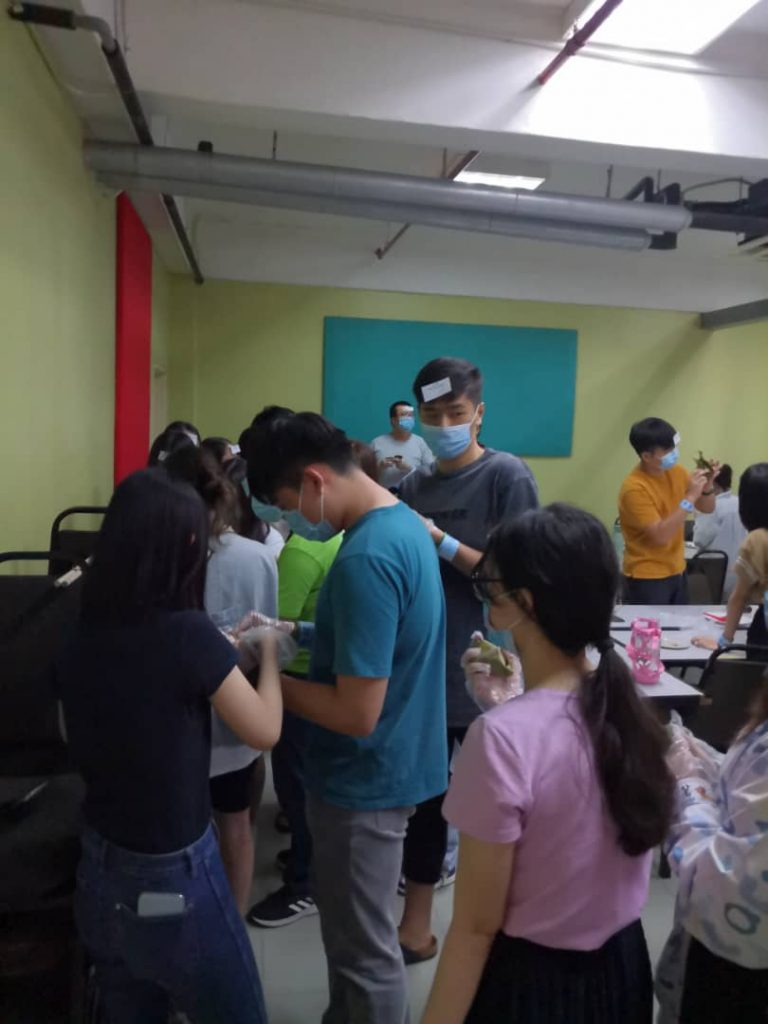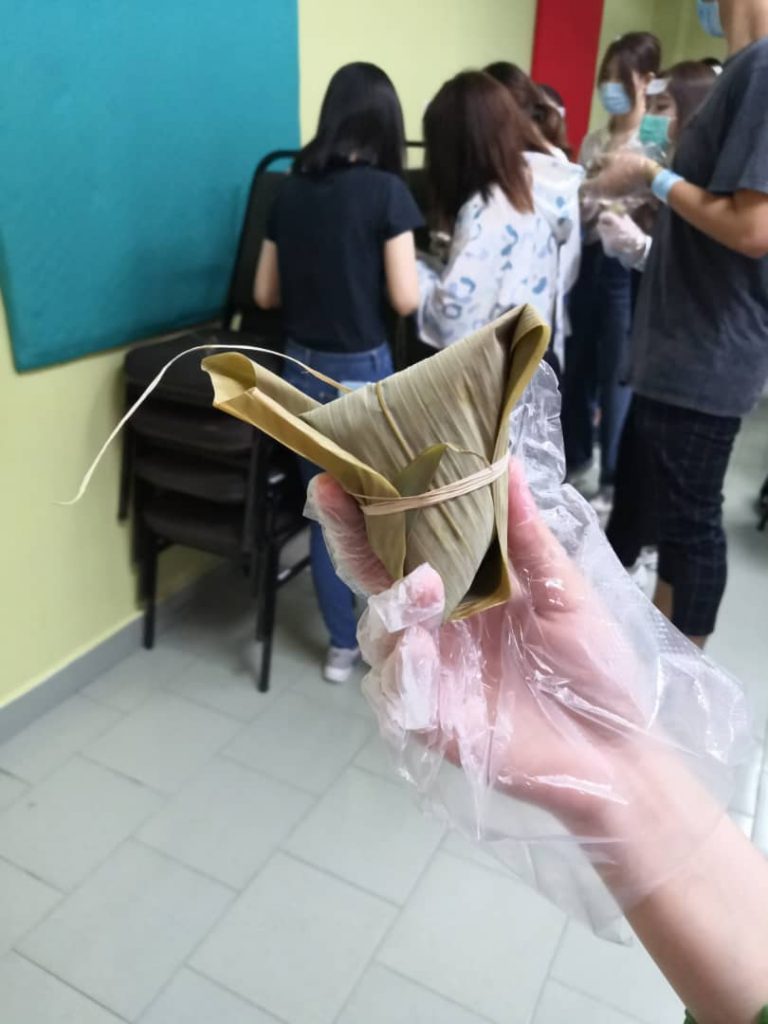Learning How to Make Chinese Dumpling

I participated in an event related to Chinese dumpling making for the Dragon Boat Festival. The origin of the festivals and the dumplings were explained. Dragon Boat Festival was on the 5th day of 5th month of the traditional Chinese calendar.
The festival commemorates the death of the poet and minister of the ancient state of Chu during Zhou dynasty, named Qu Yuan. He was banished by the king because of opposing the alliance with the increasingly powerful state of Qin. He was even accused of treason. He wrote lots of poetry during his exile out of frustration and disappointment. The capital of his nation was conquered by the Qin twenty-eight years later. In despair, he drowned himself in the Miluo River. The local people that admired him tried to rescue him or at least to retrieve his body with boats, which was said to be the origin of the dragon boat race during the festival. Unfortunately, his body was no way to be found. The people threw balls of sticky rice into the river with the silly hope that the fish would eat them instead of Qu’s body. That is said to be the origin of the Chinese dumpling, zongzi.
The main activities for the event were tutorials for making the Chinese dumpling. Materials like washed fresh leaves, stir-fried glutinous rice, stir-fried dried shrimp, and marinated pork belly, stir-fried mung beans, cut shiitake mushroom and toasted chestnut are prepared by the organiser. They practically completed the fillings preparations steps for us so we just learnt how to wrap zongzi. That was unexpected. I thought they would be teaching for the whole process. They claimed that it was the most challenging and exciting part.
First, choose two pieces of leaves, with the smooth sides up. The smaller leaf is put slightly to the left and on top of the large piece of leaf. Both of my leaves have a similar size so I ignored the second step. The two leaves are then layered together and folded up at the centre of the leaves to form a cone. A small inward fold is made at the bottom then the leaf is turned around to form a cone. That was confusing but the facilitator helped me with the step. The cone is then filled up with a tablespoon of glutinous rice at the bottom, followed by pork belly, dried shrimp, mung beans, chestnut and mushroom. The fillings were covered with two tablespoons of glutinous rice. The above step depends on the size of rice dumpling that you plan to make. I added two more tablespoons of glutinous rice and more pork belly. The cone is held with one hand to secure its shape which is important to make a nice dumpling. The leaf was folded down firmly to close the cone. A firm press was given so that it would not fall apart and could get a tight seal. The facilitator helped to adjust the alien-like shape of my rice dumpling. Her skills were excellent. The final shape of my dumpling was nice. The extra leaves are folded to one side of the zongzi and the shape is secured with twine. They have certain skills to know where the twine should go to secure the shape.





Then, we brought our masterpiece back to cook ourselves. They provided us with the cooking tutorials verbally. From my experience, it took a lengthy period of time to be fully cooked but it was tasty.
